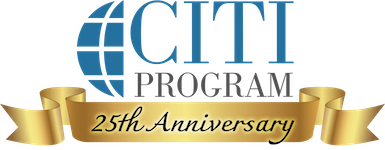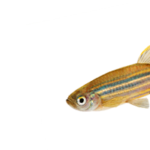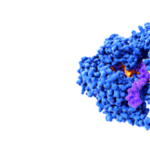Season 1 – Episode 28 – 3Rs Technologies in Animal Research
Discusses the 3Rs of animal research, teaching, and testing (replacement, reduction, and refinement), including the methods and technologies that support their application.
Podcast Chapters
Click to expand/collapse
To easily navigate through our podcast, simply click on the ☰ icon on the player. This will take you straight to the chapter timestamps, allowing you to jump to specific segments and enjoy the parts you’re most interested in.
- Overview of the 3Rs (00:01:09) Megan explains the 3Rs: Replacement, Reduction, and Refinement in animal research.
- Definition of Replacement (00:03:39) Megan outlines the concept of Replacement and its importance in humane experimental techniques.
- Definition of Reduction (00:05:04) Reduction focuses on minimizing animal use while maximizing data quality in research.
- Definition of Refinement (00:06:11) Refinement aims to improve animal welfare through procedural modifications and better handling practices.
- Responsibilities for Applying the 3Rs (00:06:20) Megan emphasizes that the entire institution must uphold the 3Rs, from leadership to researchers.
- Methods Supporting Replacement (00:08:34) Megan discusses various methods, including in-vitro techniques and microphysiological systems for Replacement.
- Methods Supporting Reduction (00:14:02) Reduction methods involve right-sizing animal numbers and improving experimental design and analysis.
- Methods Supporting Refinement (00:18:22) Refinement methods enhance animal welfare through better housing, handling, and monitoring practices.
- Resource Recommendations (00:21:27) Megan shares recommendations for additional resources on the 3Rs and related methods.
- 3Rs Certificate Course (00:21:47) Megan announces the upcoming launch of a comprehensive 3Rs Certificate Course in collaboration with CITI Program.
- Website Resources (00:22:02) Megan discusses the wealth of resources available on the 3Rs Collaborative website, including papers, handouts, and online training.
- Final Thoughts on Implementation Challenges (00:23:28) Megan emphasizes the challenges of implementing the 3Rs and encourages continuous improvement within institutions.
- Encouragement for Advocacy (00:24:11) Megan encourages listeners to advocate for the 3Rs and acknowledges the importance of incremental progress.
- Closing Remarks (00:25:07) Daniel wraps up the conversation, thanking Megan and inviting listeners to explore more educational resources.
Episode Transcript
Click to expand/collapse
Daniel Smith: Welcome to On Tech Ethics with CITI Program. Our guest today is Megan LaFollette, who is the executive director at The 3Rs Collaborative where she advances better science for both people and animals. She received her PhD and Master of Science in Animal Behavior and Welfare from Purdue University. She’s an expert in advancing the implementation of practical, impactful, and evidence-based three Rs techniques. Today we are going to discuss the three Rs of animal research, teaching and testing, including the methods and technologies that support their application.
Before we get started, I want to quickly note that this podcast is for educational purposes only. It is not designed to provide legal advice or legal guidance. You should consult with your organization’s attorneys if you have any questions or concerns about the relevant laws and regulations that may be discussed in this podcast. In addition, the views expressed in this podcast are solely those of our guests.
And on that note, welcome to the podcast, Megan.
Megan LaFollette: Thanks, Daniel.
Daniel Smith: Really looking forward to learning more about the three Rs. So to get started, can you tell us more about yourself and your work at The 3Rs Collaborative?
Megan LaFollette: Absolutely. I’m happy to. My background is that I’ve got a PhD in animal behavior and welfare, and I’ve always been really interested in behavior in all species, not just animals and lab animals, but also actually humans. I’m really interested in understanding why people do or do not employ techniques such as the three Rs to the benefit of animal welfare.
And so what I do at The 3Rs Collaborative is I really focus on this at a broad scale. So what we really do is we work to identify key techniques for the three Rs and then figure out are they or are they not being used? And then how can we promote that? So for example, we have initiatives focused on refined mouse handling, which I’ll go into a little bit more later, but is about picking up mice with tunnels instead of the tails and trying to help institutions switch to this method. We’ve got initiatives focused on replacement of soil bedding sentinels, rodents in the vivarium that are used for health monitoring. We’ve got initiatives focused on translational digital biomarkers, artificial intelligence, microphysiological systems, non-human primate, behavioral management, as well as culture of care or compassion fatigue.
And really comprehensively all of these are about increasing real world wide scale implementation. We do this by doing things like providing really practical resources. So that might be a downloadable SOP, an educational course, giving presentations, FAQs. We also provide what we call social proof related to the techniques. So we have a good idea of who might be key leaders in the field already using it, and then we really champion those people and champion those institutions so that others can learn from them. And then we just kind of address any misconceptions and generally promote the three Rs across the scientific field.
Daniel Smith: Thanks, Megan. We’ve mentioned the three Rs a few times, but for our listeners who are not familiar, can we take a step back for a moment and define what the three Rs are in the context of animal research, teaching and testing?
Megan LaFollette: Definitely. So the three Rs can be a little confusing for animal research because their English definition and their technical three Rs type definition don’t entirely match. So I’ll start with replacement. So the three Rs were developed by Russell and Birch in the 1950s. And these were two individuals that really were tasked with the aim of upholding more humane experimental technique. And so they said, okay, if we’re going to do animal research, what are some things that we need to do to make it more humane, to increase what they would call the humanity of the research, decreasing animal distress.
They said the first thing and the most impactful thing would be to apply replacement. Which is about really replacing any scientific method that might have in the history of experimentation with a non-animal method, or at least that’s kind of how we interpret that right now. So this might be through in vitro or in silico techniques, et cetera. And sometimes if the animals aren’t experiencing any distress or pain, they consider that replacement. Nowadays, we would say partial replacement would be more like using cells from animals or maybe using an agricultural by-product in an animal experiment where, again, no more animals were required for the experiment. So that’s replacement.
Next is reduction, and this is really about minimizing the number of animals while maximizing the quality of data. And it’s really important to note that this is not just about using the fewest number of animals, like, okay, we’re just going to use two mice for this experiment and that’s reduction. They really emphasize it’s about still having high quality data and that you need to use an appropriate number of animals. Not too few. Not too many. Some people like to think about this as right sizing and some ways to reduce or about experimental design, data analysis, good breeding. Again, I’ll go into that later.
And then finally, there’s refinement. And so that’s again, okay, we can’t replace the study. We really need to use animals. How do we improve animal in that particular study? That’s refinement. So that might be a procedural modification that might be changing housing or handling, but it’s really about decreasing pain and distress and improving animal welfare.
Daniel Smith: It’s a really helpful overview. So in practice who is responsible for applying and upholding the three Rs?
Megan LaFollette: So the three Rs should really be applied and upheld by an entire institution. If an organization is conducting animal research, there needs to be responsibility from the highest to the lowest level. So from upper level leadership, it’s really important that even that upper level leadership are committing resources, making sure they’re creating strategies and providing that wholehearted, we apply all three Rs and we’re going to support our staff and employees in doing that.
So from leadership, sometimes the institutional official, IACUCs, animal review bodies, attending veterinarians to managers, technicians, researchers, even students. Anybody if you are at all involved in animal research, it is your responsibility to work to further the three Rs. And the other thing that’s kind of interesting about the three Rs, especially with this replacement piece, is sometimes there’s people that don’t do any animal research, they’re really only doing replacement or perhaps they’re a statistician and they can help with reduction and so they also have a role to play.
And so again, that’s why it really has to be comprehensive throughout an institution because if you only teach even maybe the current people who are conducting animal research about it, it might be difficult for them to connect to maybe the statisticians or the scientists conducting in vitro research or other types of replacement research. So again, it should be really spread across kind of a very wide amount of stakeholders. It’s a really, and I think we’ll talk about this more as we go into the technologies, it’s a pretty broad topic because it is so comprehensive on how to improve the humanness of animal research.
Daniel Smith: Absolutely. So I want to now kind of dig deeper into each of the Rs, of replacement, reduction and refinement. So to start, let’s talk some more about replacement. So what methods and technologies support replacement?
Megan LaFollette: For replacement there’s different ways to kind of categorize different types of replacement. Typically, we think about in vitro methods. So these are kind cell-based culture methods, commonly, or, well, an up-and-coming technology that’s getting more and more use is related to microphysiological systems. Here at The 3Rs Collaborative we’ve got a really big initiative on this. And these are, if you’ve heard of organ on a chip technology, this is where we take human cells, sometimes animal cells, but often human cells and we’re able to kind of grow them in ways to really mimic how real organs inside our bodies really work. They have multiple cell types, they have cell-cell interactions, they might have flow, et cetera. And this can be a really good technology and a really exciting technology to support replacement and really get this human centric, human first data into our scientific research pretty early on. So that’s kind of the in vitro methods. There’s also some simpler in vitro methods that can be used as well.
Then we have in chemico methods, this is about using kind of the principles of chemistry to replace animal research. And an example of this is actually related to our environmental health monitoring initiative I mentioned about replacing soiled bedding sentinels. So basically what we used to do in labs is that we have this giant room with a lot of mice in it. We need to make sure that those mice are healthy, but we don’t want to have to test the mice, all of these mice directly. Both for efficiency reasons, we don’t want to disturb them, et cetera. So instead we would take dirty soiled bedding from their cages, put it at a different cage, and then test the mice that were hanging out in that cage periodically. And to see, okay, are these mice sick? And that might tell me about the health status of my colony.
Well, nowadays we don’t need that. We can use PCR technology, which really amplifies DNA. Where we can just swab the dust in that dirty bedding or in the exhaust, send it out to a lab, perform some fairly basic chemistry on it, and can tell what pathogens might have been in there based on DNA fragments. So that’s a type of in chemico. Again, there’s also looking at chemical structures and using predictions about what we already know about chemical structures and how that might affect toxicity or efficacy to make predictions. There’s these big databases related to this.
And that kind of leads me to the third main area, which is in silico. This is in the computer or on the kind of computer chip. And again, we can use computer modeling, which might relate to this topic of chemical structure. Again, there’s some really great databases and places where if you’re trying to develop a drug or look at a chemical, you can put in its structure into this database and get a lot of productions on how it’s going to affect the human body and what sort of reactions it might have. But also we can use things like artificial intelligence to predict, again, what’s going to happen with that new chemistry and how we might be able to just design different things. We have an initiative focused on the use of artificial intelligence for preclinical safety and risk assessment. And that initiative really discusses why the time is right for this, how artificial intelligence has been used in the past, and how we might be able to use in the future, as well as some challenges for that too.
So those are the three main types of replacement. The other kind of technology and method for replacement is what we kind of term these training related replacement. So in the past, probably if you go to the doctor and you’re going to get surgery, you want to make sure that your doctor has really good training. You don’t really want to be its doctor’s first surgical patient. The first time that they’ve ever actually cut into a human body or done everything like that. And so traditionally, a lot of times we might use animals in those methods where we have animals kind of subbing in for the human body. Or similarly, if you’re doing animal research, you have the animals you’re using in your experiment, you want to make sure you’re really good at your technique that you’re doing with your tests, with your official experimental animals before you actually do it on them.
So where these animals use more for those types of training. And there’s been more and more moving away from those methods and replacing them with really lifelike simulators where it really mimics what it’s like to maybe make an incision, do sutures, check vitals, and there’s a lot of different kind of physical, sometimes also art based on augmented reality ways to replace these more traditional methods. So those are the four main types of replacement technologies there are.
Ed Butch: I hope you are enjoying this episode of On Tech Ethics. If you’re interested in important and diverse topics, the latest trends in the ever-changing landscape of universities, join me, Ed Butch for CITI Program’s original podcast, On Campus. New episodes released monthly. Now, back to your episode.
Daniel Smith: So moving on to reduction, what are the methods and technologies that support reduction?
Megan LaFollette: So again, reduction, it should be emphasized is really about this right sizing concept. That it’s using the right number of animals, not too few, not too many. And there’s a couple ways that you can do this. So part of it is about experimental design. There are certain ways that you can design your experiment to reduce bias, to prevent bias or alleviate bias. So things like just randomly housing the animals if you have them in a room, because we know that animals that are maybe closer to the door or closer to the lights are going to be more stressed. So if you put all of your control animals on one side and all of your test animals on the other side, this is what’s called a confounded design. So things like that, making sure that you’re having an appropriate amount of variability that spread evenly across all your animals.
Things like using the right animal models, having really good data analysis practice. So for example, we used to really use what’s called a T-test in statistics. It’s something that you can fairly simply calculate by hand and is fairly easy to understand. But it actually is not the best statistical test for an animal research project. There are much stronger and more comprehensive statistical tests that are going to take into account a lot more factors and reduce that variability and explain it from a statistical standpoint.
So again, big thing about reduction is just this kind of experimental design, data analysis, data processing, making sure we’re understanding variability, asking the right questions and asking them in a good way and using the right animal model. And then the other pieces are related to the animal colony management. So if an institution is using animals in research, they need to get those animals from somewhere. Sometimes that’s from a repeatable animal vendor, which we actually recommend as an important production strategy for most cases, because that animal vendor is the one who is engaging in this responsible breeding practice. They really have all the techniques to make sure that say the genetics of the animal are consistent and they’re not overproducing.
But if there are going to be breeding of animals in-house, which there’s been a lot of research related to genetic engineering and kind of trying to understand how genes are related to diseases behavior, et cetera. And so if you are going to breed in-house, it’s really important to get a lot of training on this, potentially use software so that you’re breeding the right number of animals with the right timing, getting the right ages, getting the right genetic backgrounds and not overproducing. Right now there’s to some degree, a bit of an issue of there just being a lot of animals bred, not used and euthanized, and we want to avoid that. That’s an important reduction piece.
Other kind of colony-related things related to reduction is about repurposing. So maybe you do breed a little bit of excess animals and you don’t need them for that particular project, or a project doesn’t require euthanasia at the end. Could you repurpose those animals for another purpose? Maybe for training, maybe for social housing if for some reason you had to maybe separate animals and they need a social companion or there’s just some other sort of scientific need. Or, even if you are euthanizing animals in a project, are there ways that a single animal can actually be used to address a lot of different questions or different scientific questions, et cetera?
There’s a lot more to go into this and a lot more technicality, but that’s the overview of some reduction-related methods, technologies.
Daniel Smith: And I’ll ask you about some additional resources where our listeners can learn more here in a moment. But just to round out our discussion of the three Rs and the methods and technologies, can you talk some more about the methods and technologies that support refinement?
Megan LaFollette: Absolutely. Again, there’s some categories of refinements in some ways. So when you’re conducting an animal research project, you want to make sure that you’re thinking about the animal’s entire experience from the time that they’re born to the time that they are euthanized and the end of the life. And so this includes things like how are they housed? How are they handled? Again, The 3Rs Collaborative, we’ve got an initiative on refined mouse handling. So we actually know from research now that the traditional method of picking up mice up by the tails causes a lot of stress. And if you can just switch to picking them up with tunnels or cupped hands that this improves their welfare to a good degree. So switching things like that for non-human primates, there’s ways to maybe train them to cooperate with procedures. And that sort of training, housing, maybe making sure that mice are provided with adequate nesting materials. Mice love to create these really complex nests. It keeps them warm. It makes them feel secure. It’s a little dark during the light period. So that housing and handling part.
The other part is kind of the experimental procedure part. So a lot of times in animal research we might have to do something to the animal. Maybe it’s a test. Maybe it’s a surgery. Maybe it’s inducing a particular disease. Again, there’s a lot of different questions we might be trying to answer, and you want to think through is that implementation in this protocol, is it going to cause additional pain and distress and is that fully necessary for the experimental aims? And if it’s not, are there ways to reduce it? So can you provide pain mitigation? Instead of maybe a surgery, could you do something a little bit less invasive? Again, even some pretty minor things like checking on the animals or removing them frequently from their housing can be challenging.
For example, another initiative that we have is our Translational Digital Biomarkers initiative. This is really about having 24/7 home cage monitoring systems where maybe we’re using video, RFID some way to just kind of track these animals 24/7 in their home cages and learn things from their behavior or maybe how they’re eating, how they’re drinking, how they’re socializing, how they’re moving. And if we can get these kind of digital biomarkers and it’s automatically picked up by the software, we might not have to do these more invasive procedures to the animals. We might be able to detect maybe disease progression faster and intervene faster and even finish our experiments faster because of that early detection.
So again, refinement has a lot of different possibilities. Ultimately, you’re trying to figure out ways to improve welfare in a really species-specific way that improves the animal’s overall kind state of being and their life from birth to death.
Daniel Smith: So I know you mentioned that you could go into much more depth about each of these three Rs. So with that in mind, do you have any recommendations for additional resources where listeners can learn more about the three Rs and the methods and technologies that you’ve discussed today?
Megan LaFollette: Definitely. So the number one thing that I’d recommend is we are about to launch our 3Rs Certificate course in conjunction with CITI. And this goes into a lot more depth on each R in each module, an introduction with some history as well as a conclusion with some applications and related concepts. Each module is fully self-contained. It takes maybe about an hour to do. It ends with a quiz to really test your knowledge. And so that course, we’ve been working with subject matter experts for quite a while on it. We’re really proud of what we’ve come up with. I think it is one of the highest quality and most in-depth ways you can learn about the three Rs from this really comprehensive aspect.
If on the other hand there was a certain thing like, oh, that refine mouse handling thing, that was really interesting to you and that’s what you want to dive into, I’d really recommend you check out our website, 3rc.org. On our website we’ve got a page for each initiative. We have a page for the three Rs overall, and we have papers, we have handouts, we have tons of online trainings, videos, et cetera, that you can dive way more into it. And I’m always happy as well. If anybody wants to reach out to me via email, and I’m just MegLaFollette@3rc.org.
Daniel Smith: Excellent. I’ll be sure to include the links to The 3RC website in our show notes. And then also definitely keep an eye out as the 3R Certificate course will be available soon.
So on that note, Megan, do you have any final thoughts that we’ve not already touched on today?
Megan LaFollette: The other thought that I would just want to emphasize is an acknowledgement that implementing the three Rs is not always easy, and it is something that a whole institution needs to work on in a lot of incremental kind of continuous improvement ways. I see sometimes that people might feel really critical of other organizations because, okay, well, they’re not doing this thing. And I think to some degree that’s certainly super valid. We want to make sure we’re always encouraging each other to do better. But we also want to, again, acknowledge that it takes time. That the process of maybe switching to refined handling to implementing different technologies isn’t going to be an immediate thing. And so don’t be discouraged if maybe you’re a student and you’re approaching your PI or maybe you’re technician and you’re approaching a management and maybe you’re not getting traction right away, or you’re not seeing quite as much as you’d like.
The fact that you’re even listening to this podcast, that you’re interested in the three Rs, that you’re learning more, that you’re advocating for things is a positive step in the right direction. And again, I just like to really encourage people and thank anybody who is working on this, because it is a step-by-step, kind of bit by bit, every drop in the bucket counts, every animal that you help, it really makes a big difference. And so just kind of that encouragement and say that again, we have a lot of resources that can help in that practical change and hope that many people listening might take that 3Rs Certificate course so they can learn more about that.
Daniel Smith: And I think that is a great place to leave our conversation for today. So thank you again, Megan.
Megan LaFollette: Awesome. Thanks, Daniel.
Daniel Smith: And I also invite everyone to visit CITIProgram.org to learn more about the new 3Rs Certificate Course, which will be available soon, as well as our other courses, webinars, and podcasts. And with that, I look forward to bringing you all more conversations on all things tech ethics.
How to Listen and Subscribe to the Podcast
You can find On Tech Ethics with CITI Program available from several of the most popular podcast services. Subscribe on your favorite platform to receive updates when episodes are newly released. You can also subscribe to this podcast, by pasting “https://feeds.buzzsprout.com/2120643.rss” into your your podcast apps.
Recent Episodes
- Season 1 – Episode 27: Data Privacy and Tracking Technologies
- Season 1 – Episode 26: Synthetic Data in Research and Healthcare
- Season 1 – Episode 25: Governance of Genetic Information
- Season 1 – Episode 24: Understanding Cellular Agriculture
Meet the Guest

Megan LaFollette, MS, PhD – The 3Rs Collaborative
Dr. Megan LaFollette is Executive Director at The 3Rs Collaborative where she advances better science, for both people and animals. She received her PhD and Master of Science in Animal Behavior & Welfare from Purdue University. She is an expert in advancing implementation of practical, impactful, and evidence-based 3Rs techniques.
Meet the Host

Daniel Smith, Director of Content and Education and Host of On Tech Ethics Podcast – CITI Program
As Director of Content and Education at CITI Program, Daniel focuses on developing educational content in areas such as the responsible use of technologies, humane care and use of animals, and environmental health and safety. He received a BA in journalism and technical communication from Colorado State University.










